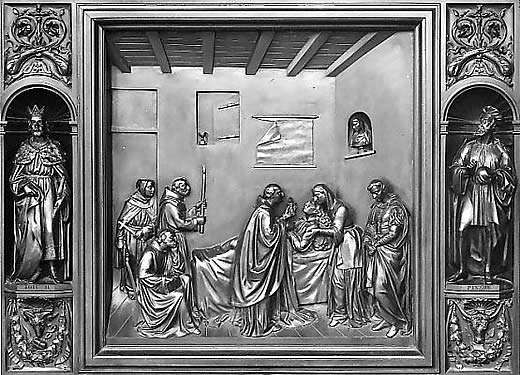About Publications Library Archives
heritagepost.org

Preserving Revolutionary & Civil War History

Preserving Revolutionary & Civil War History

Credit: Architect of the Capitol
Media type: doors
Museum Number:
Annotation: The Columbus Doors that stand at the east entrance of the U.S. Capitol Rotunda are an imposing sight. They stand nearly 17 feet tall and weigh 20,000 pounds. The artist was Randolph Roger, and his alto-relief bronze doors make a powerful statement about not only their subject, Christopher Columbus, but the importance of Columbus to the national consciousness. The bronze doors are curved, with a semicircular tympanum above two valves that are divided into four panels each. The details of each scene are finely modeled, and techniques of Renaissance perspective and different levels of relief give each scene a sense of depth. At the pinnacle is a bust of Columbus, surrounded by rays and oak leaves, signifying his rising to glory. A running border is ornamented with Indian headdresses and emblems of conquest, navigation, the arts and sciences, history, agriculture, and commerce. The four figures symbolizing the continents of Asia, Africa, Europe, and America indicate the entire world’s acknowledgement of Columbus’s accomplishment. Between the panels are sculpted heads of historians and others whose writings on Columbus’s voyage were the bases for the scenes depicted. The life of Columbus begins at the bottom of the left valve and continues in a clockwise progression. The panel that is pictured here is the Death of Columbus, 1502. After Queen Isabella’s death in 1504, Columbus lost his influence at the court. As he lies on his death bed, priests and friends are gathered around him, and one priest holds up a crucifix for him. Columbus died at Valladolid on May 20, 1506. The figures on either side of the panel represent King John II of Portugal and Martín Alonzo Pinzón, the commander of the Pinta. This information is from the website of the Architect of the Capitol (http://www.aoc.gov).
Year: 1860